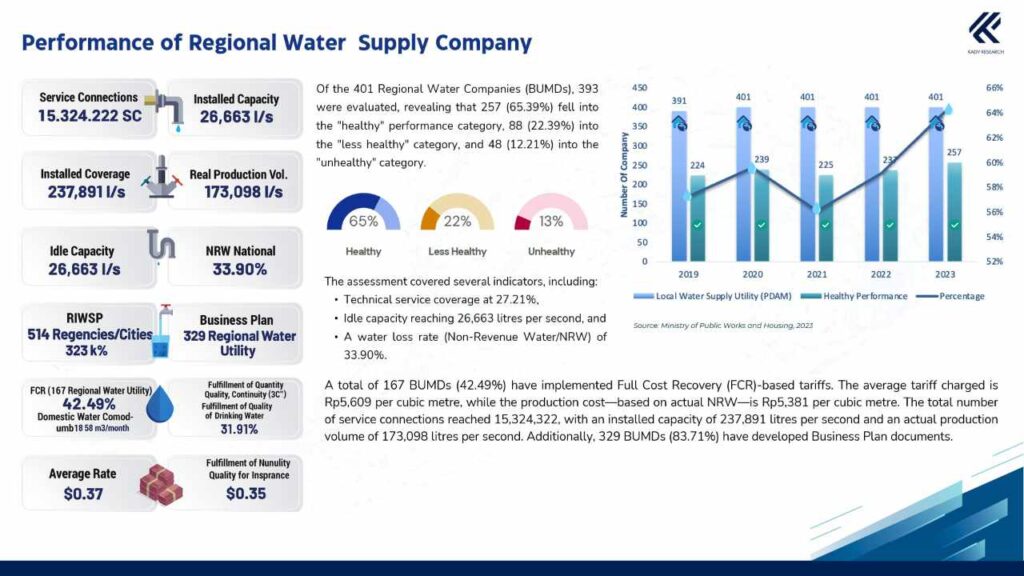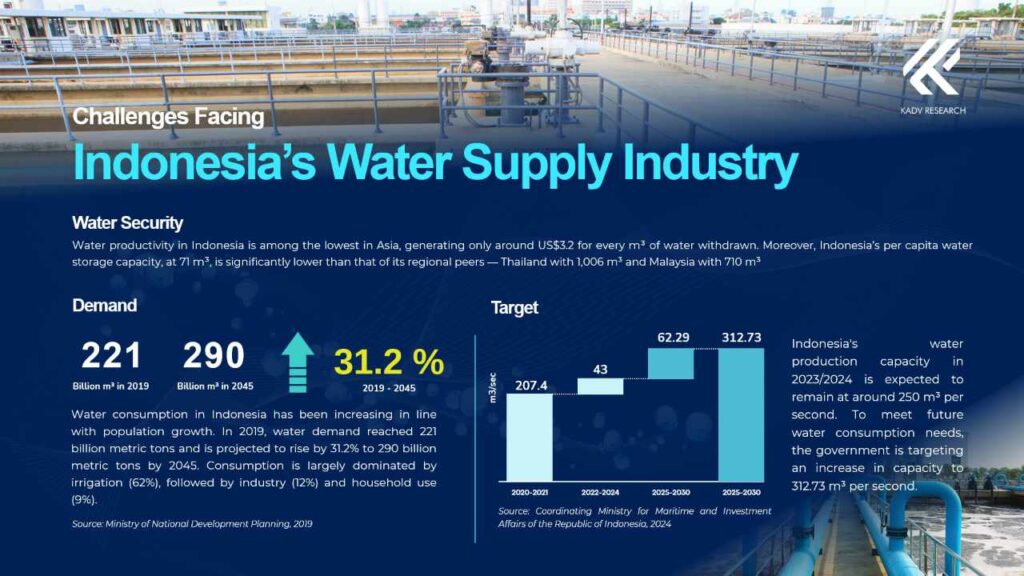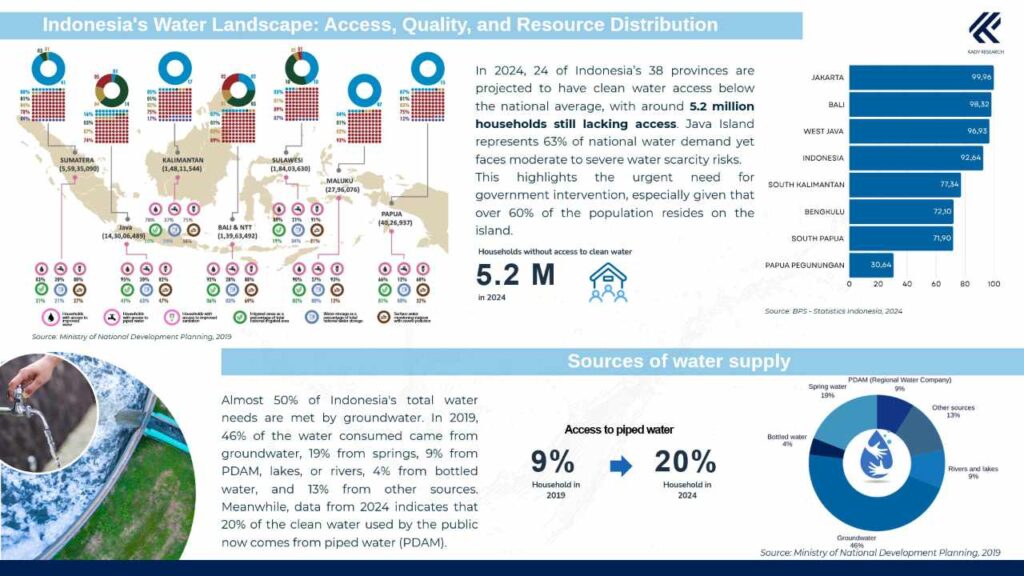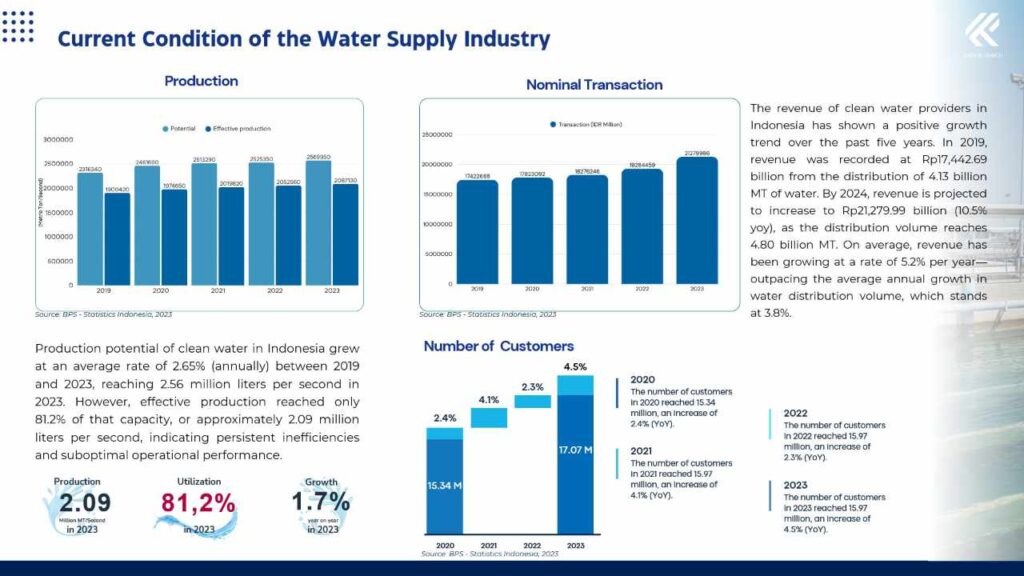Indonesia’s water supply industry is facing significant challenges in meeting the growing demand for clean water. With rapid population growth and urbanization, the need for sustainable water management is more urgent than ever. This article explores the current state, key challenges, and government targets in the sector.
Low Water Productivity and Storage Capacity
Indonesia ranks among the lowest in Asia for water productivity, generating only US\$3.2 per m³ of water withdrawn. Its per capita water storage capacity is also far behind regional peers: Thailand (1,006 m³) and Malaysia (710 m³), while Indonesia stands at just 71 m³.
Water Demand Projections to 2045
In 2019, Indonesia’s water demand reached 221 billion m³, and is projected to increase by 31.2% to 290 billion m³ by 2045. Water usage is primarily dominated by:
- Irrigation (62%)
- Industry (12%)
- Households (9%)
National Water Production Targets
To meet future demand, the government aims to increase water production capacity from 250 m³/second in 2023/2024 to 312.73 m³/second by 2030. This strategic move is essential to support sustainable development.
Uneven Access to Clean Water
By 2024, only 20% of households had access to piped water (PDAM), up from 9% in 2019. However, 24 out of 38 provinces still fall below the national average in clean water access, with 5.2 million households lacking service. Java Island, which accounts for 63% of national water demand, faces moderate to severe water scarcity risks.
Water Sources in Indonesia
In 2019, Indonesia’s water sources were distributed as follows:
- Groundwater: 46%
- Springs: 19%
- PDAM, lakes, rivers: 9%
- Bottled water: 4%
- Other sources: 13%

Production Efficiency and Operational Challenges
Clean water production grew at an average rate of 2.65% annually between 2019 and 2023, reaching 2.56 million liters/second. However, only 81.2% of this capacity was effectively utilized, indicating operational inefficiencies.
PDAM Performance and Tariff Structure
Out of 401 Regional Water Companies (PDAMs), 65.39% were classified as healthy. However, the Non-Revenue Water (NRW) rate remains high at 33.9%. Around 42.49% of PDAMs have adopted Full Cost Recovery (FCR) tariffs, with an average rate of Rp5,609/m³, slightly above the production cost of Rp5,381/m³.
Conclusion
Indonesia’s water supply industry stands at a critical juncture. With challenges such as low efficiency, unequal access, and increasing demand, collaborative efforts between the government, private sector, and communities are essential to build a resilient and inclusive water infrastructure.
other :
Perkembangan Industri Sektor Pertambangan Pirofilit
Strategi Implementasi IT yang Efektif untuk Perusahaan Skala Menengah








